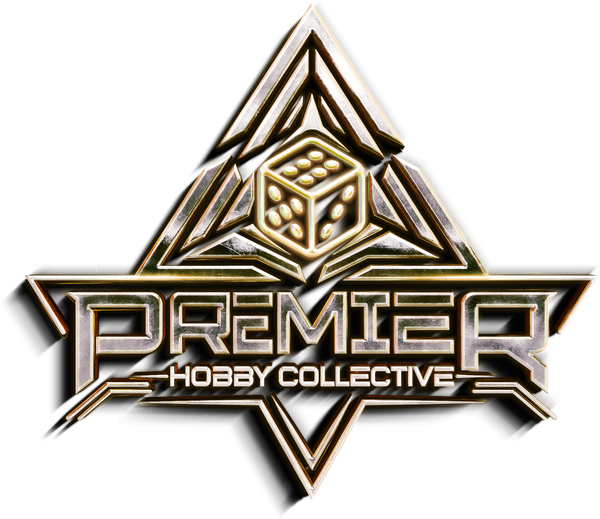If you grew up in the late 90s, you saw Pokémon everywhere. You bought Red, Blue and Yellow for the Gameboy. You followed Ash Ketchum’s journey to become a Pokémon master every afternoon after school. You watched Mewtwo Strikes Back in cinemas, and rented the VHS tape afterward. You knew the PokeRap off by heart (and by extension so did your parents). Of course, you also bought into the trading card game (TCG) during Base Set.
In my home town, a few minor leagues developed around cards that still only represented 151 Pokémon. We played casually with our friends and got demolished by twenty-somethings at our LGS. Before long, those same stores exposed us to other games like the more tactical Magic: The Gathering, or Warhammer 40 000, which blew our teenage minds. My group of friends migrated to those, and left Pokémon behind as a fond memory.
Fast forward twenty years. Armed with less free time, but more money, I’m looking to get back into some hobby games. And it’s a wonderful feeling walking into PHC and seeing a lively community of people neck deep in those same games. Warhammer is still represented by the boys in blue. Magic players are doing something called Commander, and Pokémon is… Hang on, what’s been happening with Pokémon?
Turns out Pokémon is Huge, with a capital H. Somehow, it’s much, much bigger than it was in the 90s, which seems almost impossible. It’s become the largest multimedia franchise in history with a listed 98.8 billion (USD) lifetime revenue (before they stopped reporting figures in 2019). And if you care to look, you’ll notice it’s everywhere. Plushies in toy stores, dedicated rooms full of cards in LGSs, the 27th season of the anime, almost two-dozen movies, a mobile game (which made half a billion US in three months since launch), the other mobile game, Pokémon Go, and… well, the list really goes on.
Looking specifically at the TCG, it’s had its ups and downs since Base Set One. Researching the history shows that the creators and owners experimented with different concepts, which didn’t always go well (looking at you Steam Siege). But they learned, and iterated, and it’s consistently grown year-on-year. These days, Pokémon is the first or second (depending on your source) most collected card game on Earth.
Being more recently familiar with Magic, I expected the most valuable Pokémon cards to similarly be the ones that broke the meta. But Pokémon is different. Cards’ values are determined by aesthetics, vintage status, or character popularity. Cards featuring the character, Iono regularly outprice more competitive ones, because she is a fan favourite character. And then there are dozens of versions of the same Pokémon or character to buy as well. Essentially, Pokémon is a lifestyle. Fans fall in love with Pokémon, trainers, or other personalities, and look for as many ways as possible to engage with them. One PHC regular is on a mission to collect all 47 Sylveon cards, for example.
This isn’t to say that there isn’t a lively competitive scene, (stay tuned to find out when PHC becomes an official Pokémon dojo). But Pokémon is a collector’s game first, and a competitive game second. People watch unboxing videos on YouTube, Instagram, Tik Tok, Twitch, and OnlyFans (for various reasons). Logan Paul famously paid USD4 million for an Illustrator Pikachu. Some people even view the cards as investments similar to NFTs or art pieces, that will only appreciate in value as the game keeps growing. Even unopened boxes are collectors items, simply because each edition has a limited production run. A sealed Base Set One booster box can sell for more than USD150,000, which is interestingly a similar mentality to high art or good wine.
If you, like me, were expecting Pokémon to be a competitive game where meta chasers pay top dollar to find the best current wombo combo, you’d be wrong. It’s far more than that. This is because Pokémon TCG is not a game in isolation. It’s one facet of the biggest multimedia empire in the world; and its audience most often cross-pollinate from other sides of the fandom. It’s unlikely that fans start their Pokémon journey with the card game. Consequently, collecting it is about more than competitive play. And many of the people who get into the game, are likely more interested in narrative or casual games than competitive ones.
Learning all of this tilted the needle for me slightly on buying a box. Maybe I could keep one in a shelf and it could pay for my five-year-old’s studies one day. More realistically, I’ll buy something to play with. I’ve always like ghost Pokémon.
I found this information thanks PHC’s Rhys sitting with me to discuss Pokémon TCG’s history, and pointing me in the right direction to find out more. And this point is important to me. Most other hobby stores are interested exclusively in sales. They take your money and bid you good day. PHC, on the other hand is crewed with a group of geeks each of whom has spent decades on their hobbies. They are passionate about the games they stock, and if you catch them on a slow day, they’ll play with you. PHC was built with that mindset – not just a store, but a community gathering spot. A place with the gear and space for likeminded hobbyists to play with their friends or make new ones.
If you’re old enough to remember a time before you could find fellow fans on the internet, you’ll appreciate this. Back in my day, the best you got was two or three friends from school, playing on each other’s bunk beds.
So, drop in. Support the store. They expect the best, because they give the best.
